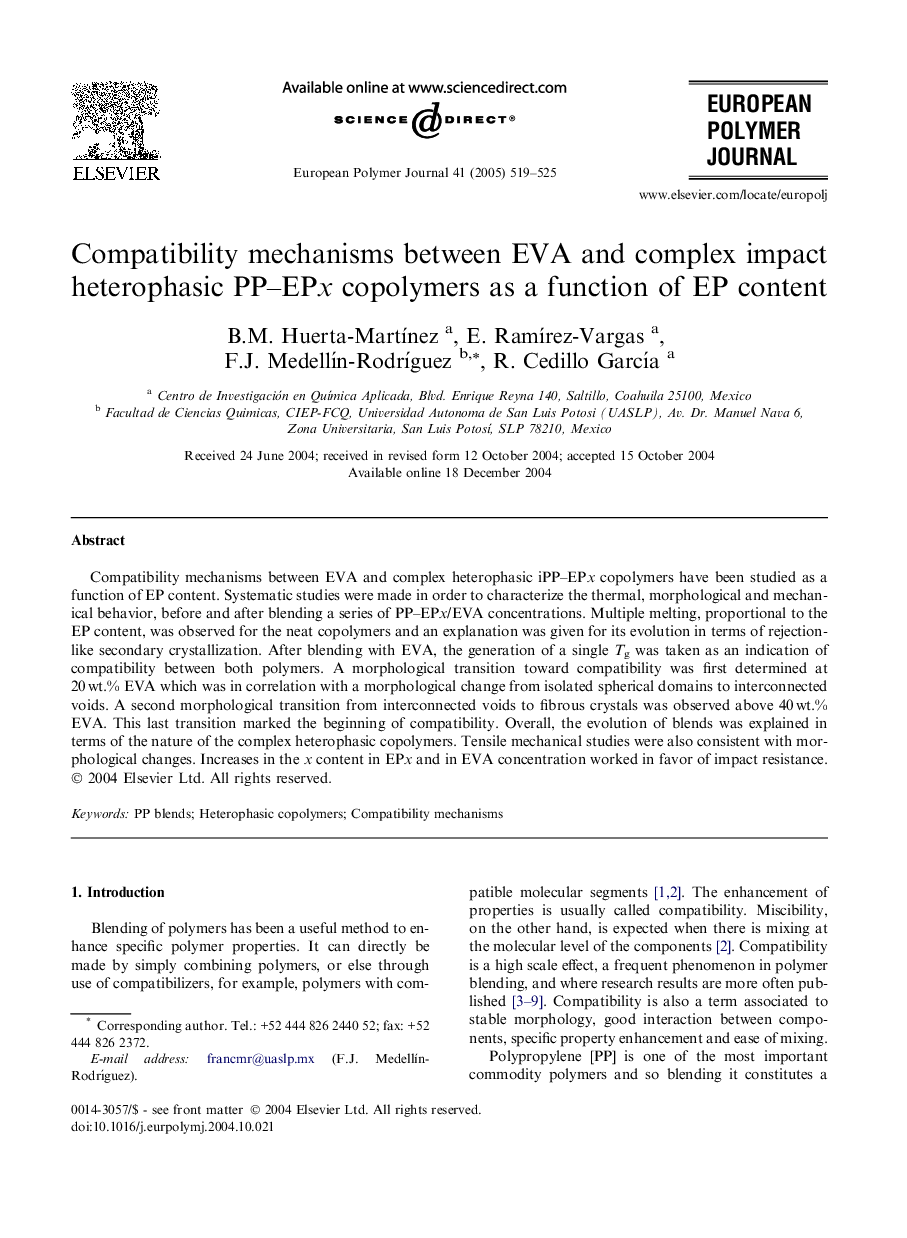| Article ID | Journal | Published Year | Pages | File Type |
|---|---|---|---|---|
| 10608600 | European Polymer Journal | 2005 | 7 Pages |
Abstract
Compatibility mechanisms between EVA and complex heterophasic iPP-EPx copolymers have been studied as a function of EP content. Systematic studies were made in order to characterize the thermal, morphological and mechanical behavior, before and after blending a series of PP-EPx/EVA concentrations. Multiple melting, proportional to the EP content, was observed for the neat copolymers and an explanation was given for its evolution in terms of rejection-like secondary crystallization. After blending with EVA, the generation of a single Tg was taken as an indication of compatibility between both polymers. A morphological transition toward compatibility was first determined at 20Â wt.% EVA which was in correlation with a morphological change from isolated spherical domains to interconnected voids. A second morphological transition from interconnected voids to fibrous crystals was observed above 40Â wt.% EVA. This last transition marked the beginning of compatibility. Overall, the evolution of blends was explained in terms of the nature of the complex heterophasic copolymers. Tensile mechanical studies were also consistent with morphological changes. Increases in the x content in EPx and in EVA concentration worked in favor of impact resistance.
Related Topics
Physical Sciences and Engineering
Chemistry
Organic Chemistry
Authors
B.M. Huerta-MartÃnez, E. RamÃrez-Vargas, F.J. MedellÃn-RodrÃguez, R. Cedillo GarcÃa,
